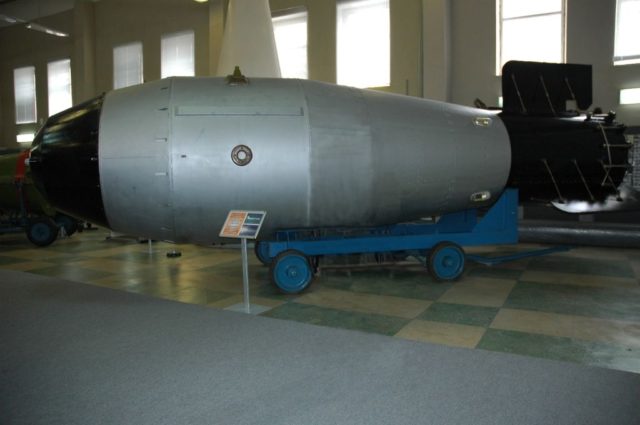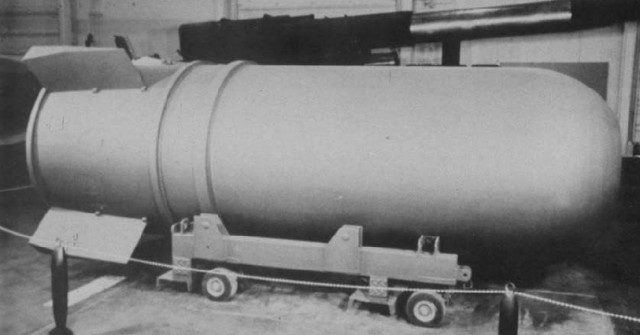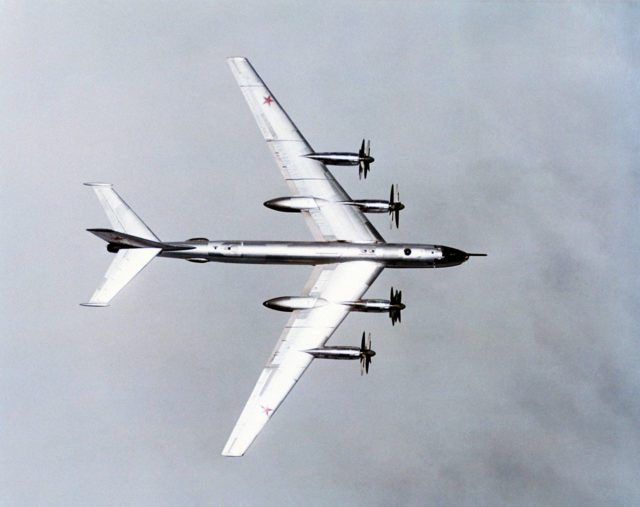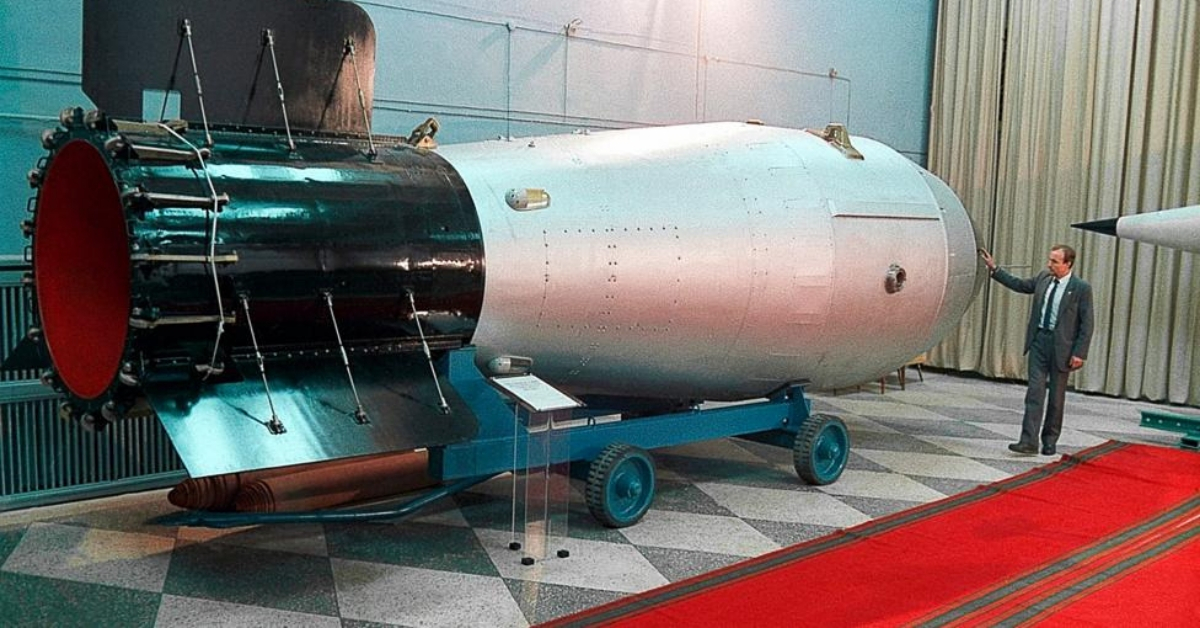Every aspect of the phrase, ‘weapons of mass destruction,’ applies to the Tsar Bomba. The weapon was the Soviet Union’s rebuttal to the United States nuclear program. A massive device, designed to decimate everything, that’s what the bomb was. Only one was detonated, and that was enough. Here are 10 things you should know about the Tsar Bomba.
Tsar Bomba remains the most powerful device ever detonated by mankind. To compare, the most powerful device the United States ever created was the B41. It was also the only three-stage nuclear device the U.S. created. The B41 had a maximum yield of 25 megatons TNT, while the Tsar Bomba had a maximum yield of 100 megatons of TNT.
2. Could’ve Been More Powerful
The bomb was tested at 50 megatons, but it could have been tested at its maximum yield, 100 megatons of TNT. It wasn’t tested at this due to fear of nuclear fallout, as well as the increased risk that the crew inside the plane that was to drop the bomb wouldn’t live through the blast. It is believed that if they had one with the full 100 megaton, the fallout created from it would amount to about 25 percent of the total amount of fallout since nuclear warheads began being developed and detonated.
3. Huge Mushroom Cloud
Of course, the most powerful nuclear bomb ever detonated had a massive mushroom cloud. The mushroom cloud is estimated to have gone as high as 40 miles in the sky, which is about seven times as tall as Mount Everest. At this height, the cloud went through the stratosphere as well as the mesosphere.

The bomb also unleashed a massive fireball to accompany the mushroom cloud. Once detonated, the fireball nearly reached the height at which the bomb was dropped and was visible more than 600 miles away from the site.
4. After Effects
If we were using the Richter scale, the general tool used to measure the strength of earthquakes, the Tsar Bomba would have measured an 8.1. But, because the bomb was detonated in the air, it didn’t cause a crazy shockwave on the ground. A thermal pulse from the blast could be felt several hundred miles away, and third-degree burns could be had from the blast as far as 62 miles from the detonation site. Window panes were broken several hundred miles from the site and the blast resulted in a massive in-air shockwave that almost took down the plane that dropped the bomb.
5. Parachute
As stated, the bomb almost knocked the plane that dropped it out of the sky. This is due to a multitude of factors including the fireball, mushroom cloud, seismic waves and more. The Soviets had planned for this situation, estimating that the pilots and crew on-board the plane only had a 50 percent chance at survival. Because of this, one of the ways the Soviets came up with to allow more time for the plane to get away from the area, was to attach a parachute to the device. This was mildly successful, as the plane was able to get out of the area, but not far enough away to completely avoid the effects of the blast (the plane made it an estimated 26 miles away). When the effects of the blast struck the plane, it instantly fell 3,000 feet.
6. Big Ivan or Tsar Bomba?
Both. Tsar Bomba was nicknamed Big Ivan, as well as a slew of other names like Project 7000, Product Code 202 and more. The bomb derived its primary name, Tsar Bomba, from other Soviet weaponry such as the Tsar Cannon and the Tsar Bell. The United States Central Intelligence Agency (CIA) had their own codename for the test, “Joe 111.”
7. It Was Too Big
The bomb was essentially built to flex the Soviet Union’s military strength. Because of this, the bomb was so huge that it was basically too huge. What does this mean? It means that it wasn’t practical for wartime use. For one, moving the bomb around was simply too complicated. It didn’t even really fit on the jet that dropped it from the sky; that plane had to be heavily modified for the bomb. Second, the crew on the plane only had a 50% chance at survival. All of this comes even after the bomb was scaled down from its original 100 megaton size.
8. Quick Build
1. Most Powerful Detonation Ever

You would think a bomb of this stature would be built over several years. After all, it’s the largest explosive ever developed and detonated by mankind. This is not so. Incredibly, the device was made in just a few months. Reports vary on the exact length of time, but the general consensus is that it only took 14-16 weeks to design and construct the bomb. 14-16 weeks. That is only three to four months!
9. Tu-95

Tsar Bomba was to be dropped in the sky from a Tu-95. The only issue? It couldn’t exactly fit the massive bomb. Weighing in at 27 metric tons (or about 60,000 pounds), the bomb was over 26 feet long and about seven feet in diameter. Because of this, the Tu095 that was equipped with the bomb had to have its bomb doors removed, as well as its fuselage fuel tanks.
10. Fast Facts
- More powerful than all the bombs exploded in WW2, combined
- 1,400 times more powerful than the nuclear bombs detonated over Nagasaki and Hiroshima
- Shockwave from the bomb raced around the world three times, and shattered windows in Finland; 500+miles away
- The Tu-95 used was painted in reflective white paint, to hopefully
aid in deflecting the heat - Total destruction (as it sounds, everything in the radius is destroyed) radius for the bomb was estimated between 22-34 miles
The Tsar Bomba has left a lasting legacy on nuclear technology. Only one of these bombs was fully built and tested. But there were several casings made for several bombs, should more have been made. Today, those interested can check out these casings at two museums, the Russian Atomic Weapon Museum and the Museum of Nuclear Weapons, All-Russian Research Institute of Technical Physics.
